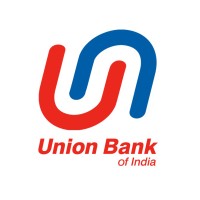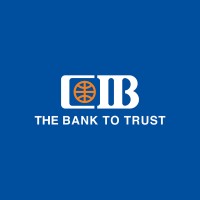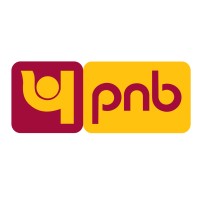Company Cyber Security Posture
NANA
NA Company Details
NA
NA
NA
NA
NA
NA
Scan still pending
NA
NA
Between 200 and 800
This score is AI-generated and less favored by cyber insurers, who prefer the TPRM score.
 NA Global Score
NA Global Score.png)

Company Scoring based on AI Models
| Model Name | Date | Description | Current Score Difference | Score |
|---|---|---|---|---|
| AVERAGE-Industry | 03-12-2025 | This score represents the average cybersecurity rating of companies already scanned within the same industry. It provides a benchmark to compare an individual company's security posture against its industry peers. | N/A | Between 200 and 800 |
Company Cyber Security News & History
| Entity | Type | Severity | Impact | Seen | Url ID | Details | View |
|---|
Company Subsidiaries

NA
Access Data Using Our API

Get company history
.png)
NA Cyber Security News
Crédit Agricole CIB taps Opensee for market risk management solution
Crédit Agricole Corporate and Investment Bank (CIB) has tapped the French fintech Opensee to launch a new market risk management solution for its front office ...
Crédit Agricole CIB Closes $1.2 Billion Sustainability-Linked Export Prepayment Facility with Suzano International Finance B.V.
Crédit Agricole CIB recently closed a $1.2 billion Sustainability-Linked Export Prepayment Facility with Suzano International Finance BV.
Crédit Agricole CIB taps Demica to launch new receivables and supply chain platform for APAC
Crédit Agricole CIB hopes the platform will appease “the increasing demand for supply chain finance” in APAC.
Broadband Firm HKBN Debuts Up to $867 Million ESG-Linked Loan
Hong Kong broadband service provider HKBN Ltd. is marketing its first sustainability-linked syndicated loan of as much as HK$6.75 billion ...
Crédit Agricole CIB uses AI to accelerate data and compliance tasks
Crédit Agricole's corporate and investment banking unit has put AI technologies at the heart of its risk and compliance functions, as Sébastien ...
Exclusive: Credit Agricole CIB chooses carbon trading over gold, sources say
LONDON, Sept 16 (Reuters) - France's second largest listed bank Credit Agricole (CAGR.PA) , opens new tab has decided to replace precious metals ...
Xander Lao on how Cebu Pacific is changing the Philippine aviation landscape
Cebu Pacific (CEB) was without a doubt one of the busiest airlines in 2024. In October, the Philippine low-cost carrier signed a landmark ...
Credit Agricole S.A. – Digital Transformation Strategies
The Credit Agricole Digital Transformation Strategies report will act as a reference point to understand a company/competitor's digital strategy. It will also ...
HSBC moves to protect operations from quantum cyber threats
These keys can be used to encrypt and decrypt sensitive data and are safe from eavesdroppers or cyber-attacks by quantum computers. The ...

NA Similar Companies

Commerzbank AG
Commerzbank is the leading bank for the German Mittelstand and a strong partner for around 25,500 corporate client groups. In addition, it supports private and small-business customers in Germany with more than €400 billion assets under management. The Bank’s two Business Segments – Private and Smal

Union Bank of India
Union Bank of India is one of the leading public sector banks of the country. The Bank is a listed entity, and the Government of India holds 74.76 percent in Bank’s total paid-up capital. The Bank, having its headquarters at Mumbai (India), was registered on November 11, 1919 as a limited company. O

CIB Egypt
Commercial International Bank was established in 1975 as a joint venture between the National Bank of Egypt (NBE, 51%) and the Chase Manhattan Bank (49%) under the name "Chase National Bank of Egypt”. Following Chase's decision to divest its equity stake in 1987, NBE increased its shareholding to 99

Evergrowing Bank
Evergrowing Banking was established on 2003 after joint-stock system reform, now it has grown to a famous national joint-stock bank. The heaquarter of the bank is in city of Yantai, Shandong Province, with 11 tier-one branches in Qingdao, Jinan, Hangzhou, Chengdu, Chongqing, Yantai, Fuzhou, Kunming

BMO U.S.
At BMO, banking is our personal commitment to helping people at every stage of their financial lives. The truth is, people’s needs change: so we change too. But we never change who we are. Which means we’ll never waiver from providing our customers the best possible banking experience in the indust

Punjab National Bank
“Fired by the spirit of nationalism and founded on the idea that Indians should have a national bank of their own, which would further the economic interest of the country, Punjab National Bank Ltd was the result of the efforts of far-sighted visionaries and patriots, among whom were persons like La

Frequently Asked Questions
Explore insights on cybersecurity incidents, risk posture, and Rankiteo's assessments.
NA CyberSecurity History Information
How many cyber incidents has NA faced?
Total Incidents: According to Rankiteo, NA has faced 0 incidents in the past.
What types of cybersecurity incidents have occurred at NA?
Incident Types: The types of cybersecurity incidents that have occurred include .
Additional Questions
What Do We Measure?
















Every week, Rankiteo analyzes billions of signals to give organizations a sharper, faster view of emerging risks. With deeper, more actionable intelligence at their fingertips, security teams can outpace threat actors, respond instantly to Zero-Day attacks, and dramatically shrink their risk exposure window.
These are some of the factors we use to calculate the overall score:
Identify exposed access points, detect misconfigured SSL certificates, and uncover vulnerabilities across the network infrastructure.
Gain visibility into the software components used within an organization to detect vulnerabilities, manage risk, and ensure supply chain security.
Monitor and manage all IT assets and their configurations to ensure accurate, real-time visibility across the company's technology environment.
Leverage real-time insights on active threats, malware campaigns, and emerging vulnerabilities to proactively defend against evolving cyberattacks.




